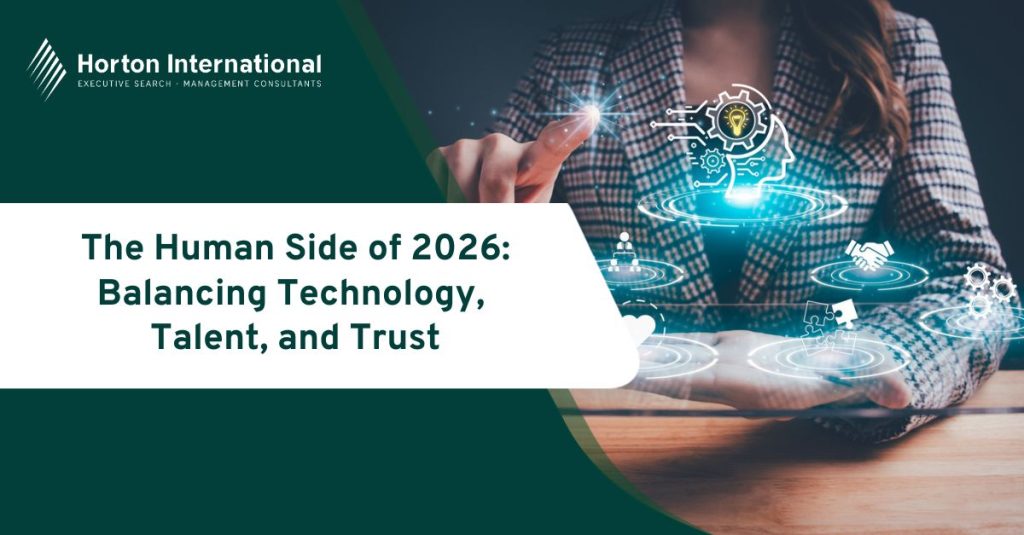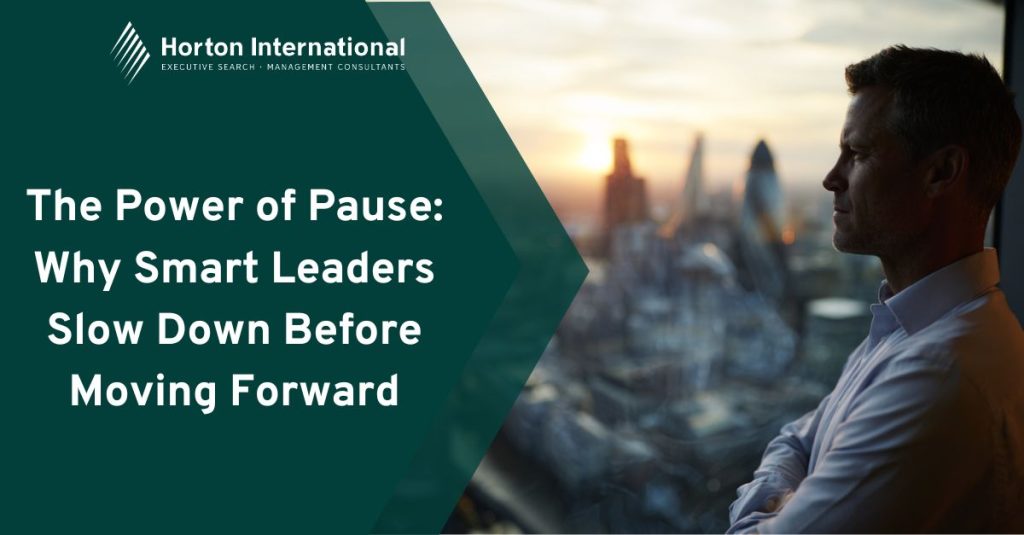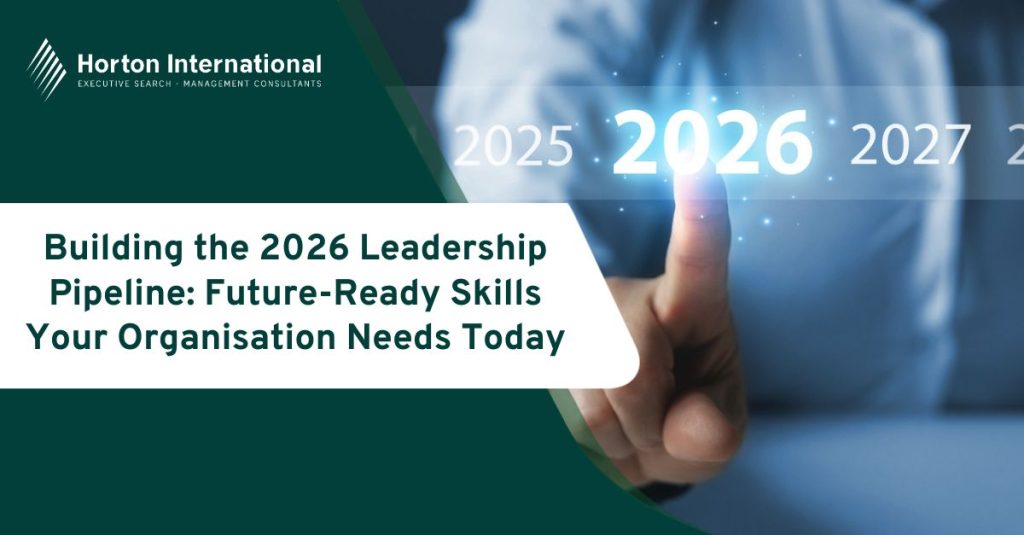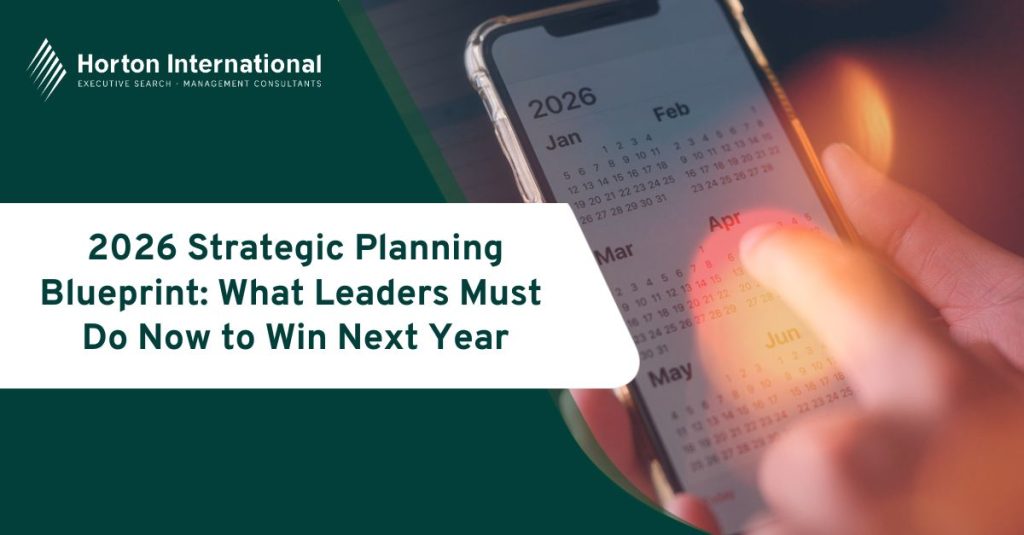In boardrooms around the world, a familiar scene is playing out. Senior executives sit around polished tables, armed with data, forecasts, and years of experience, yet find themselves caught in an uncomfortable paralysis. The decisions that once felt straightforward now seem fraught with competing priorities and unclear outcomes. Welcome to the leadership tension trap – where traditional decision-making frameworks buckle under the weight of modern complexity.
Recent research from Deloitte’s 2025 Global Human Capital Trends reveals a troubling pattern: leaders are increasingly stuck in wait-and-see cycles, uncertain how to navigate the fundamental tensions that define executive decision-making.[1] This isn’t simply about making tough choices – or failing to make them. It’s not premier league football where the manager can be sacked and replaced. Instead, we need to grasp that the very nature of leadership has evolved into something far more nuanced and demanding than previous generations of executives ever faced.
The Three Core Tensions Defining Modern Leadership
Every C-suite executive today grapples with three fundamental leadership tensions that shape every strategic decision.
- The first tension exists between short-term results and long-term value creation. Shareholders demand quarterly performance whilst stakeholders increasingly expect sustainable, purpose-driven strategies that may take years to materialise. This creates a particularly acute challenge for leaders in executive roles, who must balance immediate market pressures with the kind of visionary thinking that builds lasting business resilience.
- The second tension emerges between business outcomes and human performance. The temptation to optimise purely for financial metrics can undermine the very human capital that drives sustainable success. Forward-thinking leaders recognise that exceptional business results flow from exceptional human performance, yet striking this leadership decision making balance requires sophisticated understanding of how people respond to change, uncertainty, and strategic pivots.
- The third tension involves the perpetual balancing act between stability and organisational agility. Organisations need enough stability to execute consistently whilst maintaining sufficient agility to adapt rapidly to market shifts. This tension has intensified dramatically as technological advancement accelerates and geopolitical uncertainty creates unprecedented volatility in global markets.
Why Traditional Decision-Making Frameworks Are Failing
The frameworks that served leaders well in more predictable environments are inadequate today. Traditional strategic planning, with its emphasis on linear progression and predictable outcomes, cannot accommodate the dynamic nature of modern business environments.
The International Monetary Fund’s recent observations about elevated global uncertainty cite inflation, geopolitical turmoil, climate disasters, and rapid technological advances as destabilising forces that “can exacerbate risks of financial market turmoil, delay consumption and investment decisions by people and businesses, and prompt lenders to tighten the credit supply.” These aren’t temporary disruptions. They are our new normal.
The problem with conventional approaches is the assumption that uncertainty is something to be eliminated rather than harnessed. Leaders trained in traditional methodologies often seek to gather more data, conduct additional analysis, or wait for clearer signals before making critical decisions. This approach, whilst seemingly prudent, can trap executives in endless loops of information-gathering that delay action and squander competitive opportunities.
Global research into decision-making under uncertainty reveals that economic anxiety often creates greater paralysis than political concerns across different business environments. Interestingly, the impact of media amplification on decision-making varies significantly across regions and regulatory contexts, yet the underlying pattern of delayed decision-making loops remains remarkably consistent across cultures and markets. [2]
The Rise of Decision Intelligence
The most effective leaders are embracing what experts call “decision intelligence”, a sophisticated approach that treats uncertainty not as an obstacle to overcome, but as valuable strategic information to be leveraged. This represents a fundamental shift in leadership mindset, from seeking certainty to building capability within uncertain environments.
Decision intelligence involves recognising that uncertainty often contains patterns and signals that can inform strategic choices. Rather than waiting for perfect information, leaders developing decision intelligence learn to identify “known unknowns”; areas where uncertainty is highest and strategic flexibility is most valuable.
This approach requires what might be called “precision padding”. In other words building strategic buffers exactly where they’re needed most rather than applying blanket contingency planning across all areas. Smart resource allocation means adding flexibility to budgets in areas most likely to face disruption, whilst timeline planning involves building strategic cushions around key transition periods.
Practical Frameworks for Complex Decision-Making
Successful executives are developing new frameworks specifically designed for high-uncertainty environments. These frameworks share several key characteristics that distinguish them from traditional strategic planning approaches and help leaders navigate strategic tensions effectively.
Case Study: Navigating AI Transformation at Scale
The CEO of a mid-sized financial services firm employing 2,500 people across Europe faced a classic leadership tension trap: regulatory pressure to implement AI-driven compliance systems, workforce anxiety about job displacement, and board demands for immediate cost savings alongside long-term competitive positioning.
Rather than choosing between short-term efficiency and long-term human capital investment, the CEO applied decision intelligence principles to navigate all three core tensions simultaneously. She mapped specific uncertainty zones, identifying that regulatory requirements were likely to evolve rapidly, whilst employee adaptation rates would vary significantly across departments.
This approach exemplifies “precision padding” in action. Instead of blanket AI implementation, she created parallel transformation paths: a rapid deployment track for routine compliance tasks, a gradual integration programme for client-facing roles, and an innovation laboratory for exploring emerging applications. This allowed her to deliver immediate regulatory compliance whilst building workforce capability and maintaining service quality.
The results were striking. Within 18 months, the firm achieved faster regulatory reporting and reduced compliance costs. Perhaps most importantly, the organisation was positioned to adapt quickly as new AI capabilities emerged, turning initial uncertainty into sustained competitive advantage. The key was treating uncertainty about AI’s evolution as valuable strategic information rather than a problem to solve.
From Case Study to Implementation
The first principle involves mapping uncertainty zones within the organisation and its market environment. This isn’t about predicting specific outcomes, but rather identifying areas where volatility is highest and strategic flexibility will prove most valuable. Leaders who excel at this create what might be termed “adaptive feedback loops” – systems designed to detect and respond to changes quickly rather than trying to predict them perfectly.
The second principle focuses on scenario-based planning that develops multiple parallel strategies for critical initiatives. Rather than betting everything on a single predicted future, sophisticated leaders build portfolios of strategic options that can be activated as circumstances evolve. This approach requires significant intellectual discipline, as it resists the natural human tendency to converge on a single ‘right’ answer.
The third principle involves embracing “strategic uncertainty” as a design feature, not a bug. This means building adaptable systems that can flex and evolve as landscapes change, rather than trying to create rigid structures that resist change. The goal shifts from building ‘future-proofing’ organisations to creating ‘future-ready’ capabilities.
Transforming Organisational Culture for Uncertainty
The most profound leadership challenge involves transforming organisational culture to thrive within uncertain environments rather than merely survive them. This requires addressing the fundamental human reality that people naturally crave certainty and comfort, particularly when facing changes that push them outside established patterns.
Effective leaders recognise these psychological dynamics without judging them, then work systematically to help teams reframe uncertainty as opportunity rather than threat. This involves helping people focus on ‘controllables’, those aspects of their work and professional development that remain within their influence, regardless of external volatility.
Cultural context plays a significant role in how uncertainty is experienced. Organizations with stronger collective frameworks, clearer hierarchical guidance, or more established internal communication structures often demonstrate greater resilience to external volatility. These environments create psychological safety nets that help employees navigate ambiguity more effectively, suggesting that organizational design choices directly influence how teams process and respond to uncertain conditions.
The cultural transformation also requires what might be called “owning it”, a mindset where individuals choose wholehearted commitment and accountability to themselves and their colleagues. In practice, this means helping team members understand how every decision and action should be processed through the lens of organisational principles, with customer value always at the centre.
Leaders driving successful cultural transformation position change as a golden opportunity for individuals to build their personal brands, demonstrating that they thrive in uncertain times and are unafraid of change, hard work, and putting team success before individual comfort.
Building Your Uncertainty Advantage
The leaders who will define business success in 2025 and beyond won’t be those who can perfectly predict the future – because those leaders don’t exist. But executives who can turn uncertainty into opportunity and build flexibility into their strategies without sacrificing clear direction or accountability for results will definitely excel.
This transformation begins with recognising that uncertainty isn’t the enemy of effective leadership – it’s an invitation to build something better, more resilient, and genuinely future-ready. The most successful leaders are learning to treat uncertainty like valuable data, using it to make more informed decisions about where to build strategic buffers and how to position their organisations for multiple potential futures.
The executive leaders who master these capabilities won’t just survive volatility – they will use it as fuel to build value and power sustainable growth. In a world obsessed with prediction, perhaps the real leadership superpower is learning how to thrive with uncertainty whilst maintaining the strategic focus and operational excellence that stakeholders demand.
Key Implementation Areas
- Resource allocation strategies that add flexibility to budgets in areas most likely to face disruption, whilst maintaining discipline in core operational areas
- Timeline planning approaches that build strategic cushions around key transition periods without compromising accountability for delivery
- Partnership development that includes backup plans for critical supply chain and alliance relationships, reducing single points of failure
- Innovation pipeline management that creates parallel paths for technology adoption based on different potential scenarios rather than betting on single solutions
- Team development initiatives that help individuals build personal resilience and adaptability whilst maintaining focus on collective objectives
The transformation from traditional leadership to uncertainty-powered leadership is becoming the fundamental differentiator between executives who merely manage complexity and those who harness it for sustainable competitive advantage,successfully addressing leadership transition challenges along the way.
Sources
[1] https://www.deloitte.com/dk/en/services/consulting/perspectives/2025-global-human-capital-trends.html
[2] https://www.tandfonline.com/doi/pdf/10.1080/16081625.2024.2405494






